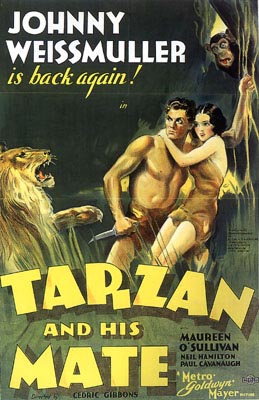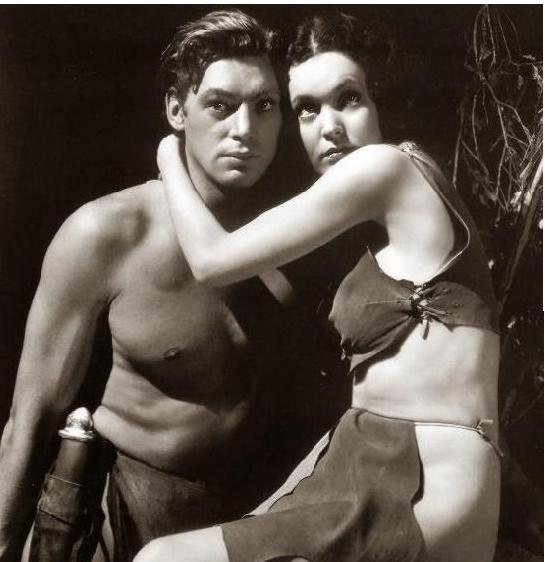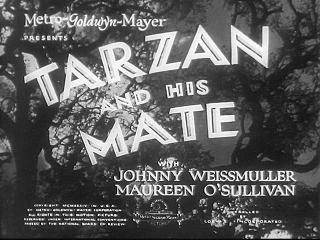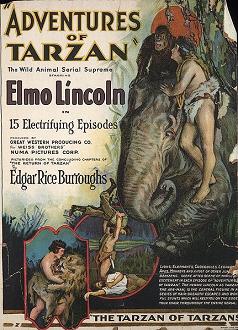
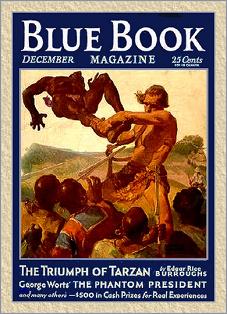 Tarzan aired “Headhunters of Wombesi” on August 8, 1951. This danger filled episode involves Tarzan agreeing to be the guide for an American photo-journalist come to Africa to show in pictures for his stateside magazine editor the “real” Africa, not the one portrayed in American movies as a dark land of voodoo, tribal sacrifice, and death lurking behind every jungle tree. To the photographer it is all a joke and not to be taken seriously, though Tarzan does everything in his power to persuade the brash American he is wrong. So when the photographer knowlingly trods an off-limits trail ignoring both Tarzan and the written signposts, he is in for more trouble than just the “Headhunters of Wombesi.”
Tarzan aired “Headhunters of Wombesi” on August 8, 1951. This danger filled episode involves Tarzan agreeing to be the guide for an American photo-journalist come to Africa to show in pictures for his stateside magazine editor the “real” Africa, not the one portrayed in American movies as a dark land of voodoo, tribal sacrifice, and death lurking behind every jungle tree. To the photographer it is all a joke and not to be taken seriously, though Tarzan does everything in his power to persuade the brash American he is wrong. So when the photographer knowlingly trods an off-limits trail ignoring both Tarzan and the written signposts, he is in for more trouble than just the “Headhunters of Wombesi.”
The adventures of the Lord of the Jungle on radio began in 1932 and ran until 1936. For the fascinating story behind this “first” on radio, we’ve provided a thumbnail recap here, written for a previous Tarzan adventure.The early incarnation of Tarzan on radio ran short cliffhanger episodes of approx. 15 minutes each several times a week, comprising 30 to 40+ episodes per complete story. Revived in 1951 and running until 1953, the modern incarnation relied on the standard half hour format, each a self-contained episode. This modern Tarzan is no “Me, Tarzan; you, Jane.” No sir, he is intelligent and well educated, speaking a number of languages. His adventures take him all over the African continent and away from his seaside Congo cabin. He fights smugglers, kidnappers, slavers, Nazis, thieves of all sorts, but most of all he protects jungle tribes (when they’re not warring with one another) and the jungle animals from those who have come to kill for sport only, and not for food and clothing. Tarzan fights for the underdog at every turn, and many times it his beloved Africa that is the most put upon underdog of them all.
{Above left: Ad for the 1921 silent film. Above right: Blue Book, Dec. 1931, Pt. 3 of serialization}
Play Time: 26:19
{Below are a poster and two stills from the second of six Tarzan movies Johnny Weissmuller and Maureen O’Sullivan would star in from 1932 to 1942, 1934’s Tarzan and His Mate being the second. Considered by most critics and by an overwhelming consensus, this movie is regarded as the best of the lot. While Weissmuller’s performance is a fine one, it is O’Sullivan who steals the show. She does everything Tarzan does in this film, including battling beasts, yodeling, swinging from trees, and swimming. Speaking of swimming, this film included a four minute skinny dipping scene where Tarzan and Jane decide to relax. The scene ended up with three versions: one with Jane fully clothed, one with her topless, and a third with her totally nude (Olympic swimmer Josephine McKim doubled for O’Sullivan in these takes). Unfortunately, none got by the censorship of the Hays Code. However, the 1990s saw the nude scene found in the vaults of Turner Entertainment and the skinny dipping scene has been restored. Jane’s skimpy garb would also become an issue, and later films would show her revealing much less skin. Johnny Weissmuller was born in 1904 and died in 1984. Maureen O’Sullivan was born in 1911 and died in 1998. O’Sullivan married director John Farrow in 1936. The marriage lasted until his death in 1963. They had seven children, one of whom is actress Mia Farrow (1945- .}
